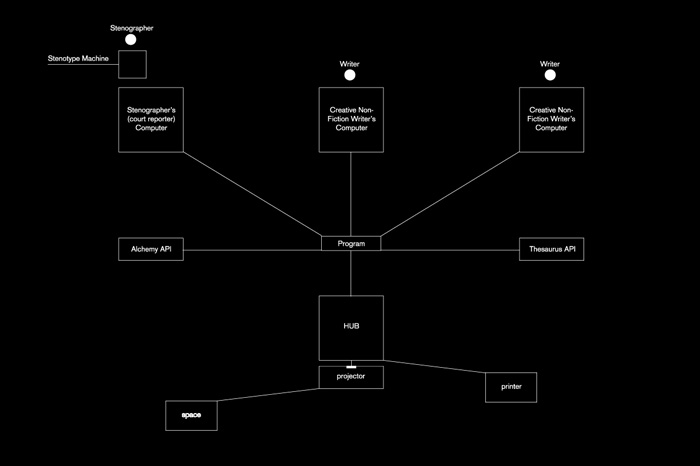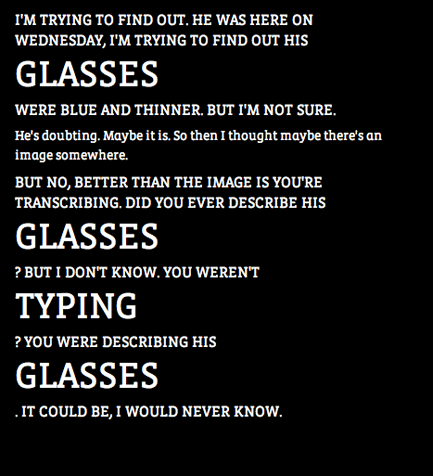
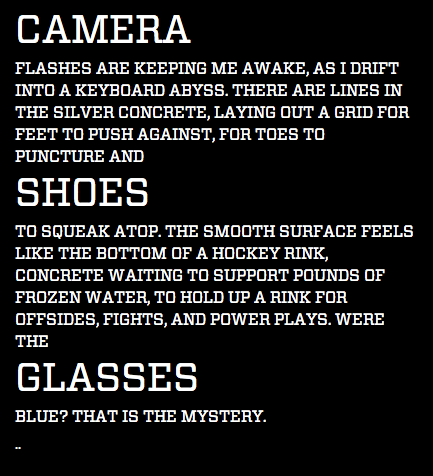
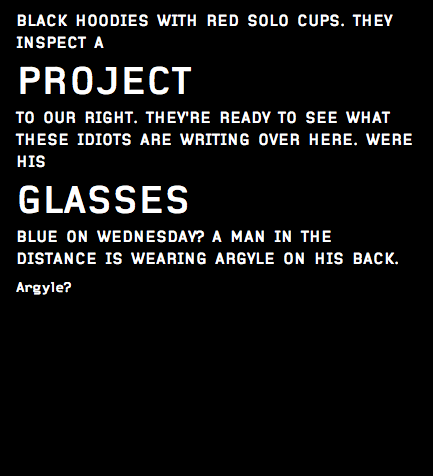
A Multi-faceted Account
Written and performed live, Myriad Accounts positions multiple writers beside one another as they record their surroundings textually in real time. This arrangement and its dynamic publishing mechanism allow readers to experience multifarious happenings of linguistic and personal reactions to the real.
The above text was pulled from the Saturday, April 23, 2011 live writing performance of the Myriad Accounts system. The event took place in concert with the ACCD Media Design Program's Grad Show in the school's South Campus Wind Tunnel. As the three writers wrote, their work was input into the Myriad Accounts program. Designed to illuminate the nuanced differences of individuality through the scope of broad similarity, the software works by querying a lexical database – the Alchemy API topic generator. The words you see styled in bold are common "topics" found amongst two or more writers. By drawing the readers' attention toward the, I am able to illustrate the varied ways in which the writers perceive and describe such things.
Writer 1: Cindy Kim – Captioning a Verbatim Transcript
Writer 2: Teddy Goldsmith – Writing Creative Non-Fiction
Writer 3: Kyle Beswick– Writing Creative Non-Fiction
The role of the captioner / stenographer is to write as objectively as is possible. By transcribing the spoken word at quite an accelerated speed (via her personalized shorthand and individual dictionary), Cindy's account is one version of what occurred throughout the evening. It is a sort of map or metronome, keeping closely in time with the mumblings she heard all around her.
Juxtaposing this "straight" account is the work of the second and third writer, recording through the genre of Creative Non-Fiction. Writer 2 (Teddy) and Writer 3 (Kyle) were told to write subjectively about their surroundings. As the designer of the system, I intentionally refrained from giving them any further direction.
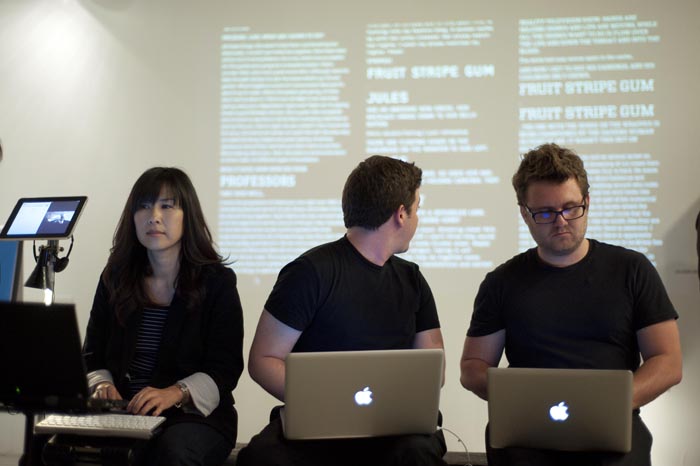
Photo: Mikey Tnasuttimonkol
As the writers created their accounts, their text was being published via projection in real time. As their texts traveled across networks and onto the wall to be displayed before the public, each phrase was being sent through a lexalitical database.
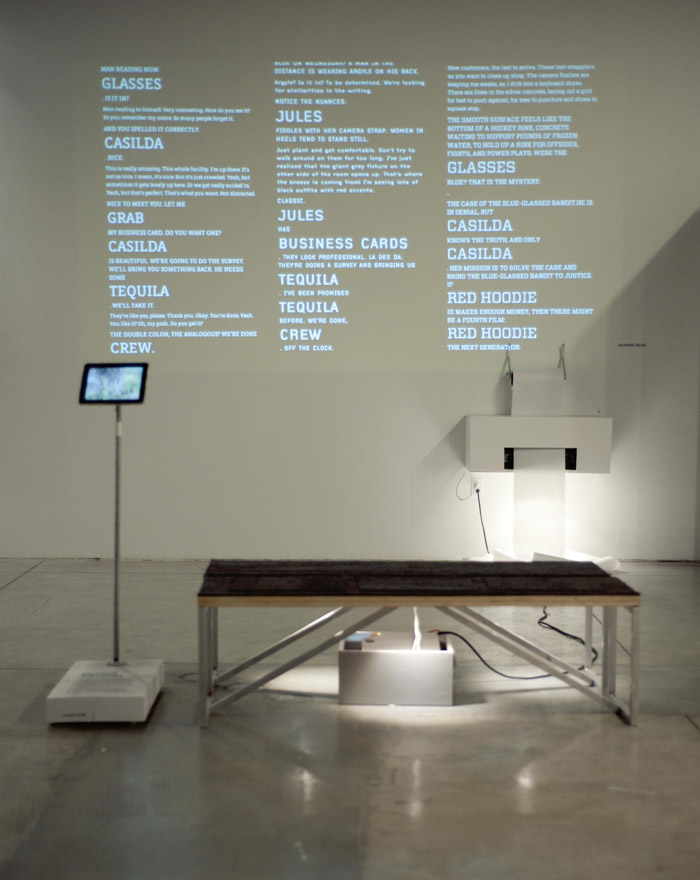
The readers in the space are tasked with the role of interpreter. Broad similarities are called to their attention so they may reflect upon them . Upon closer inspection, readers are given the opportunity to identify nuance and difference between each writer's acount.
The architecture and arrangement of the space provides readers with a method for comparative reading. The bench pictured above is designed with this relationship in mind. Writers and readers are positioned back to back in order to practice three acts in conjunction with one another: looking, reading, reflecting. The simultaneity of the readers' experiences in the space with the written accounts presented before them create a sort of High Resolution reading experience.
Rather than strive for a pure, singular truth, readers and writers are invited to embrace something multi-faceted. Something complex in form and function.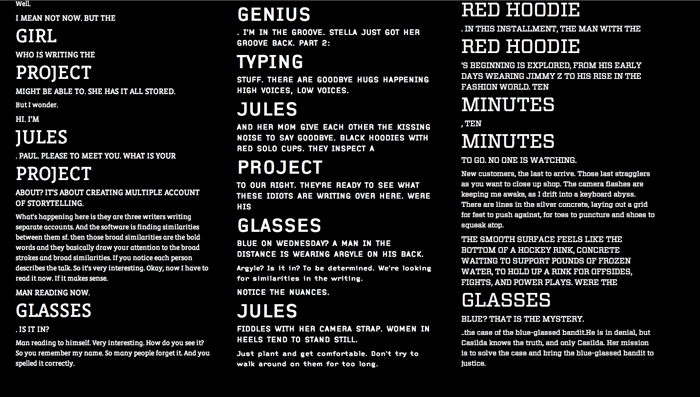
"It's more interesting to have just a picture of a small detail - then you can dream all the rest around it. Because when you see the whole thing, what is there to imagine?" -Dries Van Noten
The breadth and speed with which each writer surveys the room leaves readers with a spattering of insights. Perhaps this is more comprehensive than an exhaustive and highly specific account.
Perhaps it isn't.
The reader is tasked to ponder these larger questions
